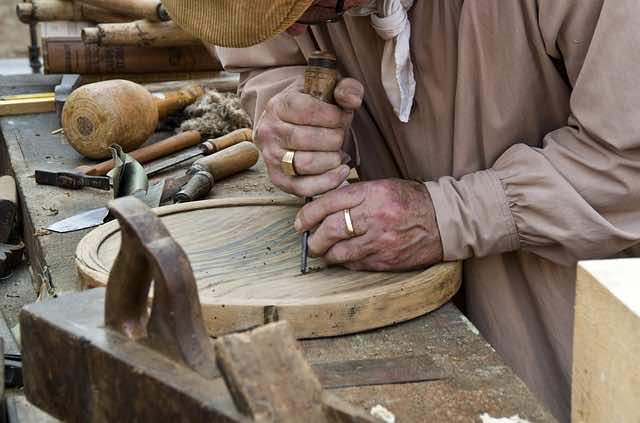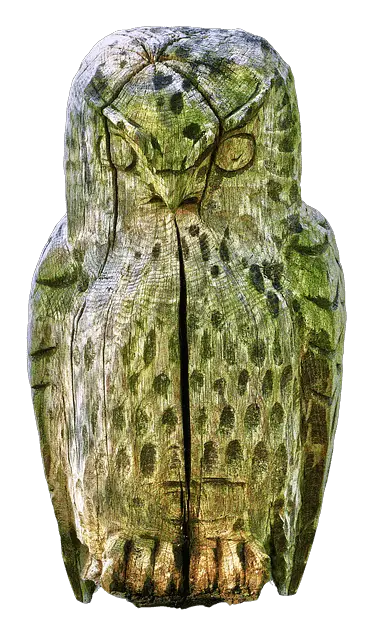Are you woodcarving professionally or as a hobby, but you seem to keep getting cracks in the wood? This can be annoying, and sometimes you feel like you need to throw your carving away because it has cracks. But there is a way to tell a mile away. That will also help you understand what you need nearby to fix it when it happens, or better yet, how to avoid it. Let us look at how you can tell if a wood carving is going to crack.

It is also helpful to understand what causes wood to split. Most large carvings tend to crack when they dry out. But weathering can also cause cracking, rotting and other types of wood decay. In this article, you’ll learn how to tell if a wood carving is going to split.
List of things that you may need to use:
- A moisture meter.
- The wood carving.
Step By Step Process.
Even though wood will not always give you clear signs of cracking, you can use a moisture temperature to tell you how much moisture is in the wood by using a moisture meter. This is one of the best ways to ensure that the moisture levels will not cause damage. To use the moisture meter, here’s what you will have to do:

- If it has them, push the meter’s pins into the wood you want to test.
- Ensure the pins are aligned with the grain
- Switch on the meter and wait for a reading. This comes about by electrical current being moved from one pin to the other, through the wood, checking to see how much interference.
Or you can use a pinless meter.
- These may be easier for you to use. All you will need to do is place the meter against the wood.
- Take the reading.
How Long it will take
The general rule of thumb is that it will take about a year to dry an inch of wood; thus, timber can take years to finally dry to the core. You will then need to repair it. But thankfully, taking the reading will take a couple of minutes.
Expected Results
Wood will need to have between 6% and 8% moisture content. However, it can go up to 19% depending on the relative humidity, also known as the area’s RH levels. Anything above these numbers could show the possibility of a crack.
Knowing the moisture levels in the wood may also help you detect cracks before they have a chance to become a problem. The moisture meter enables you to understand what levels are in the wood.
Things to look out for
Solve the problem as soon as you can. If you do not quickly sort out cracks in wood, they are likely to spread. It is important to spot them far off or try avoiding them together if possible.
The tricky thing with checks is that you can see some of them while not others. In most cases, the wood dries along growth rings rather than across the growth lines. Knowing when the wood will crack is almost impossible.

The best thing you can do is keep it away from places and conditions that can exacerbate shrinkage. However, keep in mind that shrinking, which leads to cracking, is natural for all wood types.
There are a couple of reasons why wood shrinks, such as;
Natural and environmental factors
Cracking is prone to happen whether it’s wood used for building or carving. Rain, humidity, or moisture can cause the wood to crack. When the wood begins to swell, it’s a clear sign that it will probably crack soon.
You may notice this after the wood has been exposed to moisture or water. For instance, a door may swell up when it rains, and you may notice that it is now harder to close. As the wood tries to get rid of the moisture, it may crack. These are also known as checks.
Lumbar cutting
Cracks in wood can be hazardous, especially if you are turning the wood. It can cause a workshop accident that isn’t prepared to handle. Also, when lumber is being cut, the process can cause a crack in the wood. This is thanks to the machinery being used.
Drying
As the wood dries, it tries to be at par with its surrounding environment. As such, it may crack. It is also known as checking, whereby the grain separates as moisture leaves the wood. As the wood dries, it shrinks.
You will need to look out for the wood’s moisture content and whether it is acceptable for the wood. This way, you will know what to expect in the long run if you use the wood.
For instance, if you use wood for floors, you want no more than 4% moisture for a 3inch wide floor. If the floors you are making will be more comprehensive than this, you will need less than 2% moisture.
Moisture levels can also differ depending on the place the wood is from. Before measuring moisture content, it helps to ensure it has been dried. You want to get a true reading as much as possible, which will help you know what steps to take next.
Conclusion
We have reported on what to look for and how to protect wood carvings from cracks. Cracks in wood do not necessarily have to be a structural problem but can be due to high moisture content. That’s why moisture meters can help you detect cracks before they become visible.
Once you have identified the cracks or the potential for cracking in the wood, you can decide if you want to continue with the project or if it is something you need to discard altogether.
We hope this helps you check moisture levels and not get surprised by cracks in your wood unless you are going for that rustic look on your final product. You should also see our post on How to join two pieces of wood side by side for wood carving & How to get rid of big chunks of wood when carving.
- Grain and Sheen: Teak Oil versus Danish Oil Uncovered - January 10, 2024
- The Cherry on Top: Crafting the Perfect Cutting Board - January 9, 2024
- Polyurethane Water-Based vs Oil-Based: Choosing the Right Finish - January 8, 2024
